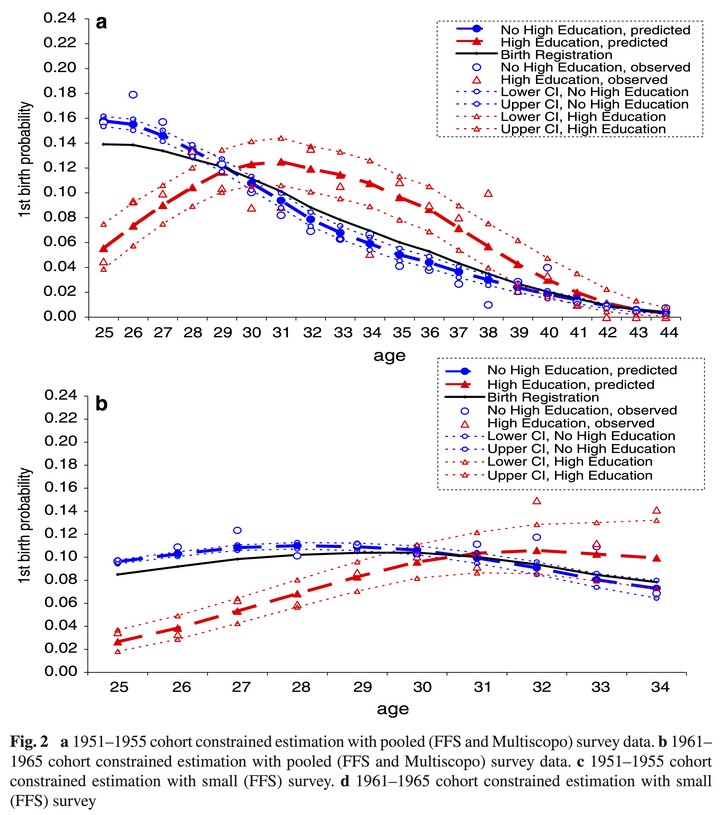
Abstract
In non-experimental research, data on the same population process may be collected simultaneously by more than one instrument. For example, in the present application, two sample surveys and a population birth registration system all collect observations on first births by age and year, while the two surveys additionally collect information on women’s education. To make maximum use of the three data sources, the survey data are pooled and the population data introduced as constraints in a logistic regression equation. Reductions in standard errors about the age and birth-cohort parameters of the regression equation in the order of three-quarters are obtained by introducing the population data as constraints. A halving of the standard errors about the education parameters is achieved by pooling observations from the larger survey dataset with those from the smaller survey. The percentage reduction in the standard errors through imposing population constraints is independent of the total survey sample size.